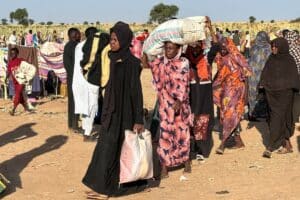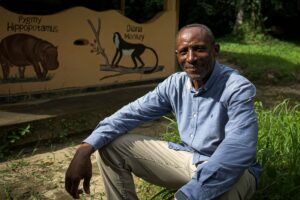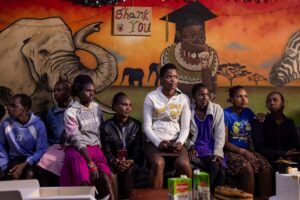For all those who travel by land in our countries, there is unanimity around one established fact: travelling in Africa is not always a sinecure, far from it.
Whatever the vehicle – Jeep 4X4, minibus, bus, van, station wagon or luxury car – our tracks and roads (if you can still call them roads) will show you all kinds of colours.
From black earth to sandy stretches, from laterite to the shifting clay of the country’s depths.
However, it is with full knowledge of the facts that I undertake this journey to San Pedro. The famous section called “La Côtière” starts from the south-eastern entrance of Yopougon to the outposts of Grand Béréby. It therefore crosses the entire coastline in the south of Côte d’Ivoire, on the Gulf of Guinea.
We left Abidjan quite early, around eight o’clock. As usual, I took a public transport, the inevitable MASA, since the big buses are no longer in use because of the dangers that are always lurking.
The masa was originally built with eighteen seats, but for the sake of the (financial) cause and illegally, it has been modified to take twenty-one people. We are cramped in this oppressive February heat.
From ten o’clock onwards, the sun distils its heavy sting as if to announce the zenith of the midday. In the vehicle with its limited space, the luggage placed on the floor and under the seats, we find it difficult to hold our legs.
It is in this atmosphere that we drive happily (almost) to San Pedro, 378 kilometres from Abidjan. The short rainy season has left its legacy of potholes and muddy puddles, which our driver seems to ignore royally.
To my left and to the right of an incontinent old man, a pregnant woman holds a five-six year old between her thighs.
At each stop, either the mother or the daughter, regardless of the neighbourhood, take obvious pleasure in consuming the sweets and other foodstuffs offered by the people of the hamlets and villages along the roads.
The smell of boiled eggs mixed with that of roasted peanuts can be a nuisance to many. But I have seen others…
Because of the numerous misdeeds of the road cutters, the villagers have ended up erecting barricades of tree trunks across the road. This also helps to curb the ardour of road rage, which is tempted to rush past as soon as the road allows it. It takes no less than six hours to reach the two towns. Between the excavations of the tarmac, the rackets in the numerous police stations and what-have-you, the travellers who get off en route, the slowdowns caused by the large trucks and container ships that are impossible to overtake, one does not die of boredom. We keep quiet out of spite.
Diomède MAÏGA, GLOBEtrotter
UPDATE: This article was written in 2009-2010
Since September 2021, the Songon – Dabou – Grand-Lahou (93 km), Grand-Lahou – Fresco (80 km) and Fresco – Sassandra – San Pedro – Grand-Béréby (180.5 km) sections of the coastline are being reinforced. With a total cost of 308 billion CFA francs, the 353.5km road infrastructure will be delivered in June 2023, according to the Ivory Coast government.
THE YAM FESTIVAL IN DJUABLIN COUNTRY
Agnibilékrou is a locality located sixty kilometres south of Abengourou near the border with Ghana. This whole region of the Comoé is inhabited by the Agnis who speak the same dialect with some differences, especially in the accents. For a few days now, our little town has been preparing to celebrate the most important traditional event of the year, the Yam Festival.
It is December and the Christmas holidays are here. So I have plenty of time to experience all the events. As a privileged observer, like all my friends who live around the palace of King Kouao Bilé. The festival will last from Wednesday to Saturday with a crucial point on Friday.
It is to prepare these four days and four nights that the drums have been heard without interruption since late November. The big day has arrived. A small procession of “Komian” women dressed in white, barefoot and with haggard faces, had spread kaolin powder on the edges of each street to ward off a possible evil spell and ensure the success of the festival. Dignitaries and notables from neighbouring villages began to arrive to take part in the sacrificial ceremonies.
White hens and goats are sacrificed in accordance with the tradition that originated in Moronou, precisely in Akakro. Legend has it that it was an Akan chief, who became an Agni after fleeing oppression in Ghana, who discovered this yam tuber by chance during a severe shortage at the time. Since then, when the harvest is done, it is verified that the king or the chief of the community tastes this nourishing yam before the Agni people consume it.
This is why the Friday of the last holy week of the year is waited for, so that the next twelve months can be approached with peace of mind. During these four days of libations, singing and dancing, one must forgive all offences, purify one’s heart and body and speak only words of love. As for me, a little schoolboy, I remembered that the drummers competed with virtuosity to the great pleasure of the dancers who had a great time.
Diomède MAÏGA, globetrotter





